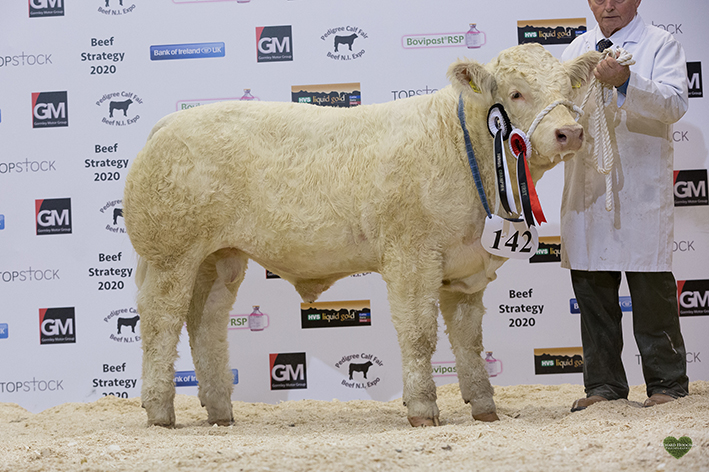There’s a need for British beef to be the best in the world – establishing brands and opportunities for farmers to create and open new markets where eating quality is valued, and premium prices can be achieved.
Chris Curry, a suckler beef producer and chairman of the British Charolais Cattle Society, says Brexit is bringing plenty of challenges when the whole subsidy system will ultimately be changed completely. “At the moment we are fishing around in the dark and that’s quite scary.
“We need to become a more integrated industry and be aware that we have some of the highest costs of production in the world. So, to succeed, we must work together and use one certification standard, for example, that everyone follows. At the moment, we’ve far too many different hoops to jump through, and each adds cost along the way.”
Chris says that we have to work on finding new markets, outside the EU, and convince the rest of the world that what we produce is worth buying. At the same time, we have to fend off supplies coming into our market at a lower price.
He believes the Charolais breed has a unique opportunity here, saying that we’ve all had the experience of buying modern joints of meat that are pink and red, but tough and tasteless.
“Eating quality will be key. The Charolais, of all the continental breeds, is the most marbled. It’s more succulent, more tender and has more taste. A lot of this has been based on hearsay, but now, with the advent of genomics, we’ve the ability to measure for these key traits.”
According to Chris, the Charolais breed has evolved ‘dramatically’ since it took the market by storm when introduced in the ‘60s. It did build a reputation for being a difficult calver, with dairy farmers moving more towards Aberdeen Angus and Limousin as their preferred cross.
“Over the years we’ve addressed this, and now have bulls with smaller shoulders and lighter bone – but ones that still retain a good meat to bone ratio and great growth rates. Now we need to win back those that still have that calving difficulty reputation in the back of their heads.”
Proof of this came in the autumn 2017 round of bull sales, where a lot of beef farmers moved back into the Charolais. “As the premium comes off some breeds, farmers will find the cattle job gets more difficult, particularly for those rearing heifer calves.
“For store and fat stock weight for age is still key. We were over the moon with both demand and prices across the autumn, and look forward to a good start in 2018 with the spring sales that will get underway soon.”
Chris urges all producers to pay much more attention to their costs of production. “I think everyone has to be concerned moving forwards,” he says. “Every input must be examined, and I would expect a producer to be able to tell me how each input effects his margin.
“The Charolais puts on more weight than any breed from every kg of grass consumed, and has a huge opportunity to get us to, and keep us at, the forefront of cost efficiency of beef production.”
He believes breakthroughs in genomics are only ‘just around the corner’ but is insistent that each breed has to see what the best use of this new science and technology will be. “We need to work out where we’ll get the best benefits, and record traits that are difficult to measure.
“We’re looking at feed efficiency and eating quality, for example. And we’re trying to be more efficient while embracing new technology and science. I don’t think we should be lagging behind other producers in the world here.
“We need to concentrate on producing a consistent product year-round, while acknowledging that we are up against it, in global terms, in terms of efficiency. With our climate, we’re competing against farmers with the ability to keep animals out year-round, and those with a far greater economy of scale.
“So, we have to make up for this in terms of quality and consistency. And the Charolais certainly has the ability to offer this.”


